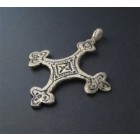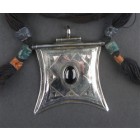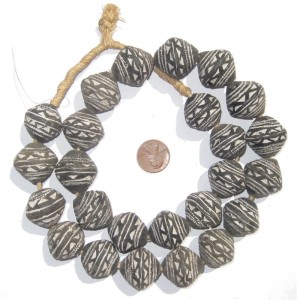The Tuareg have long been regarded some of the most skilled metal-smiths on the continent, yet it’s only fairly recently that the true extent of their skill has been realized internationally. They are primarily known for their bold, geometric pendants fashioned from silver, which have not only spiritual value, but are also considered symbols of identity, conveying an individual’s origins and heritage. Tuareg pendants are distinguishable from those of Morocco and Ethioia in that they are almost always made of silver. It is said that Berber women have a deep-rooted superstitious fear of gold metal, which is why only white based alloys and metals are used.

Tuareg Southern Cross with the four directional points.
The Southern Cross, one of the most commonly traded pendant styles in Niger, has a fascinating history as an heirloom passed down from father to son in Berber families. The pendant is usually presented when a child ‘comes of age’ or reaches puberty, and is considered to be symbolic of his virility and cultural heritage. There are twenty-one different cross styles in Berber culture, each corresponding to one of the 21 towns or villages which make up the Berber ‘kingdom’ in Niger. All crosses feature four distinguishable points said to represent the four directions, or “cardinal leaders” of the world. It is customary for a father to recite the following phrase when passing down a cross to his son: “ I give you the four directions of the world, because you never know where you will be when you die”.
The Tuareg pendants worn by Berber women are far more elaborate than Southern Crosses, often inset with semi-precious stones such as carnelian, onyx, or amber. They are often square or ‘v’ shaped, and marked with geometric etchings and patterns which symbolize the sultan and/ or his palace, the four cardinals of the world, and the ancient towns of the Berber kingdom. The reverse is often inscribed with a quote, phrase or prayer which has a specific spiritual meaning to the the wearer – the most common being “God is the core of my being, I am one with God”. Contemporary Tuareg pendants are often decorated with niello enamel, as opposed to semi-precious stones, and often feature symbols pertaining to fertility, motherhood, the path of life, and death.

A typical silver Tuareg pendant featuring the central ‘sultan stone’, and geometric patterns representative of the Berber kingdom.
